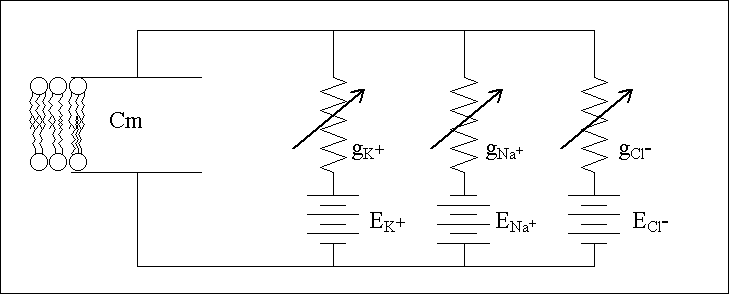
There are 3 components to the model:
1. A capacitor -- as indicated in the diagram, the plates of the capacitor correspond roughly to the inner and outer faces of the plasma membrane, which are ‘formed’ by the polar head groups of the constituent phospholipids that comprise the bilayer structure of the membrane.Note that each ion, in this case Na+, K+, and Cl-, is represented by its own component of the circuit. Each of these consists of a variable conductance and an emf. Also note that all of these ion circuit components are in parallel with each other.
2. Variable resistances -- in keeping with current practice, these are actually labeled as variable conductances, g, rather than resistances.
3. Electromotive forces -- these are represented in the model as batteries.
Basic Questions
1. What do the variable conductances and electromotive forces correspond to in the excitable cell?
2. In most organisms, the extracellular [Ca++ ] is roughly 105 times greater that the intracellular [Ca++ ]. Based on this information, add a Ca++ circuit to the basic diagram. Which way should the emf be ‘oriented’ in your diagram? What will Ca++ flux through the membrane tend to do to the membrane potential (hint: will it tend to have the same effect as Na+, K+, or Cl-)?